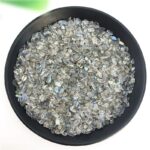Prepare to embark on an extraordinary journey into the captivating realm of ultraviolet (UV) reactive materials, where hidden marvels come to life. Join us as we uncover the fascinating applications, cutting-edge technologies, and boundless possibilities that lie within this mesmerizing world.

The Essence of UV Reactivity
UV reactive substances possess the remarkable ability to absorb energy from ultraviolet radiation and re-emit it in the form of visible light. This interaction with light transforms ordinary materials into vibrant beacons of color, unlocking a hidden canvas for creative expression and scientific exploration.
Pain Points and Motivations
The need for innovative and customizable materials fuels the rapid growth of the UV reactive market. Industries grapple with demands for enhanced safety, improved aesthetics, and tailored solutions that cater to specific customer requirements. UV reactive materials offer a unique solution to these pain points, empowering businesses and individuals alike.
Versatile Applications
The versatility of UV reactive materials extends far beyond aesthetics. They play a crucial role in a wide range of applications, including:
- Security: UV-reactive inks and pigments are used to create covert markings and security features in passports, banknotes, and valuable documents.
- Medical Imaging: UV fluorescence is employed in medical imaging techniques such as fluorescent microscopy and immunohistochemistry to visualize biological structures and diagnose diseases.
- Industrial Inspection: UV-reactive coatings and tracers are used for non-destructive testing and quality control in manufacturing processes, ensuring product reliability.
- Artistic Expression: UV reactive pigments and paints enable artists to create captivating works of art that reveal hidden designs and patterns under UV illumination.
Emerging Technologies
Advances in nanotechnology and materials science are fueling the development of novel UV reactive materials with enhanced properties. These include:
- Tunable Fluorescence: Materials that emit light at specific wavelengths upon UV exposure, allowing for precise color control and tailored applications.
- Photochromic Effects: Materials that reversibly change color upon exposure to UV radiation, enabling dynamic and responsive designs.
- Multifunctional Materials: Materials that combine UV reactivity with other properties, such as electrical conductivity or thermal insulation, for innovative applications.
Innovative Applications
The future of UV reactive materials is brimming with possibilities. Emerging applications include:
- Biotechnological Imaging: UV-reactive probes for advanced bioimaging and drug discovery, enabling the visualization of complex biological processes.
- Cybersecurity: UV-reactive markers for securing electronic devices and protecting against data breaches.
- Self-Healing Materials: UV-activated healing mechanisms for enhanced durability and extended product lifespans.
Common Mistakes to Avoid
To harness the full potential of UV reactive materials, it is crucial to avoid common pitfalls:
- Incorrect Light Source: Using the wrong wavelength or intensity of UV light can result in poor fluorescence or unintended effects.
- Incompatibility with Substrates: Ensuring compatibility between UV reactive materials and their substrates is essential for optimal performance and longevity.
- Environmental Degradation: Some UV reactive materials may be susceptible to degradation under prolonged UV exposure, necessitating careful selection and protective measures.
Customer Insights
Delving into the wants and needs of customers reveals the following insights:
- Customization and Differentiation: Customers seek materials that enable them to create unique and distinctive products or experiences.
- Reliability and Durability: Quality and long-lasting performance are paramount, ensuring that UV reactive materials meet rigorous industry standards.
- Ease of Use: Materials should be easy to incorporate into existing processes and applications, minimizing disruption and maximizing efficiency.
Conclusion
The world of UV reactive materials presents a boundless source of innovation and endless possibilities. By embracing their unique properties and leveraging advanced technologies, we unlock a realm of hidden wonders that transform industries, ignite creativity, and empower scientific breakthroughs. As we continue to explore the depths of UV reactivity, the future holds the promise of even more astonishing applications, revolutionizing the way we interact with our surroundings and opening up uncharted territories of discovery.
Table 1: Global Market Size
| Year | Market Size (USD Billion) |
|---|---|
| 2021 | 2.5 |
| 2026 | 4.2 |
| CAGR | 9.6% |
Source: Grand View Research
Table 2: Applications of UV Reactive Materials
| Industry | Application |
|---|---|
| Security | Covert markings, banknotes |
| Medical | Imaging, diagnostics |
| Industrial | Inspection, quality control |
| Art | Paintings, installations |
| Consumer Products | Cosmetics, toys |
Table 3: Technological Advancements
| Technology | Key Benefits |
|---|---|
| Tunable Fluorescence | Custom color control and tailored applications |
| Photochromic Effects | Dynamic and responsive designs |
| Multifunctional Materials | Advanced properties for innovative applications |
Table 4: Common Mistakes
| Mistake | Consequence |
|---|---|
| Incorrect Light Source | Poor fluorescence or unintended effects |
| Incompatibility with Substrates | Suboptimal performance or material damage |
| Environmental Degradation | Reduced lifespan or compromised functionality |




























